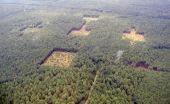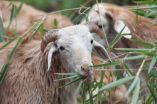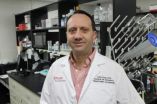(Press-News.org) Clinical trial assesses anti-FGF23 for treating X-linked hypophosphatemia
X-linked hypophosphatemia (XLH) is a heritable form of rickets that results from mutations in the gene encoding the phosphate regulating endopeptidase (PHEX). Unlike diet-associated forms of rickets, XLH cannot be ameliorated by vitamin D ingestion. XLH patients have increased serum levels of FGF23, which decreases both inorganic phosphate (Pi) and the activated form of vitamin D. In this issue of the Journal of Clinical Investigation, Thomas Carpenter and colleagues at Yale University evaluated the effectiveness and safety of an anti-FGF23 antibody (KRN23) in a small cohort of XLH patients. A single dose of KRN23 administered intravenously (i.v.) or subcutaneously (s.c.) improved renal phosphate reabsorption, and increased serum Pi and activated vitamin D concentrations, and s.c. administration provided benefit for a longer duration than i.v. dosing. These findings, along with a favorable safety profile, indicate that KRN23 should be further evaluated for use in XLH patients.
TITLE:
Randomized trial of the anti-FGF23 antibody KRN23 in X-linked hypophosphatemia
AUTHOR CONTACT:
Thomas Carpenter
Dept. Of Pediatrics (Endocrinology), New Haven, CT, USA
Phone: 203-785-6526; Fax: 203-737-4290; E-mail: thomas.carpenter@yale.edu
View this article at: http://www.jci.org/articles/view/72829
Altered glycosylation patterns protect tumors from NK cells
Compared to other diseased cells, malignant tumor cells often exhibit modified surface glycosylation patterns, potentially altering recognition by host immune cells. Natural killer (NK) cells are sentinels of cancer immunosurveillanc system and express multiple receptors that allow for discrimination between healthy and malignant cells. In this issue of the END
JCI online ahead of print table of contents for Feb. 24, 2014
2014-02-24
ELSE PRESS RELEASES FROM THIS DATE:
Seed dispersal gets a test in carved-out 'habitat corridors'
2014-02-24
MADISON, Wis. — Field ecologists go to great lengths to get data: radio collars and automatic video cameras are only two of their creative techniques for documenting the natural world. So when a group of ecologists set out to see how wind moves seeds through isolated patches of habitat carved into a longleaf pine plantation in South Carolina, they twisted colored yarn to create mock seeds that would drift with the wind much like native seeds.
The "seeds" were dusted with fluorescent powder and inserted into custom-made boxes mounted on poles, then released as the scientists ...
Better livestock diets to combat climate change and improve food security
2014-02-24
Livestock production is responsible for 12% of human-related greenhouse gas emissions, primarily coming from land use change and deforestation caused by expansion of agriculture, as well as methane released by the animals themselves, with a lesser amount coming from manure management and feed production.
“There is a lot of discussion about reduction of meat in the diets as a way to reduce emissions,” says IIASA researcher Petr Havlík, who led the study “But our results show that targeting the production side of agriculture is a much more efficient way to reduce greenhouse ...
Marine algae can sense the rainbow
2014-02-24
A new study published in Proceedings of the National Academy of Sciences has shown for the first time that several types of aquatic algae can detect orange, green and blue light.
Land plants have receptors to detect light on the red and far red of the spectrum, which are the common wavelengths in the air. These plants sense the light to move and grow as their environment changes, for example when another plant shades them from the sun. But in the ocean, the water absorbs red wavelengths, instead reflecting colours such as blue and green. As part of the study, a team of ...
A paper diagnostic for cancer
2014-02-24
CAMBRIDGE, MA -- Cancer rates in developing nations have climbed sharply in recent years, and now account for 70 percent of cancer mortality worldwide. Early detection has been proven to improve outcomes, but screening approaches such as mammograms and colonoscopy, used in the developed world, are too costly to be implemented in settings with little medical infrastructure.
To address this gap, MIT engineers have developed a simple, cheap, paper test that could improve diagnosis rates and help people get treated earlier. The diagnostic, which works much like a pregnancy ...
Species conservation poised to benefit from DNA advances
2014-02-24
A biologist at the University of York is part of an international team which has shown that advanced DNA sequencing technologies can be used to accurately measure the levels of inbreeding in wild animal populations.
The research by senior author Dr Kanchon Dasmahapatra, of the Department of Biology at York, and led by Dr Joseph Hoffman, of the Department of Animal Behaviour, Bielefeld University, Germany, may help efforts to conserve rare species.
Laboratory studies show that inbreeding reduces fitness. However, studying the impact of inbreeding in wild populations has ...
Acupuncture holds promise for treating inflammatory disease
2014-02-24
When acupuncture first became popular in the western hemisphere it had its doubters. It still does. But over time, through detailed observation, scientists have produced real evidence that ancient Chinese practitioners of the medical arts were onto something.
Now new research documents a direct connection between the use of acupuncture and physical processes that could alleviate sepsis, a condition that often develops in hospital intensive care units, springs from infection and inflammation, and takes an estimated 250,000 lives in the United States every year.
"Sepsis ...
New study shows a genetic link between feeding behavior and animal dispersal
2014-02-24
New research from the University of Toronto Scarborough shows that animal dispersal is influenced by a gene associated with feeding and food search behaviours.
The study, which was carried out by UTSC Professor Mark Fitzpatrick and PhD student Allan Edelsparre, provides one of the first aimed at gaining a functional understanding of how genes can influence dispersal tendencies in nature.
Using common fruit flies (Drosophila melanogaster), the researchers observed how two different foraging types – known as sitter flies and rover flies – moved over large distances ...
Ecotourism reduces poverty near protected parks, Georgia State University research shows
2014-02-24
ATLANTA--Protected natural areas in Costa Rica reduced poverty by 16 percent in neighboring communities, mainly by encouraging ecotourism, according to new research published today in the Proceedings of the National Academy of Sciences.
Although earlier studies indicated that establishing protected areas in poor regions can lead to reductions in poverty, there was no clear understanding why or how it happens.
"Our goal was to show exactly how environmental protection can reduce poverty in poorer nations rather than exacerbate it, as many people fear," says co-author ...
AGU: Uncovering the secret world of the Plastisphere
2014-02-24
HONOLULU – Scientists are revealing how microbes living on floating pieces of plastic marine debris affect the ocean ecosystem, and the potential harm they pose to invertebrates, humans and other animals. New research being presented here today delves deeper into the largely unexplored world of the "Plastisphere" – an ecological community of microbial organisms living on ocean plastic that was first discovered last year.
When scientists initially studied the Plastisphere, they found that at least 1,000 different types of microbes thrive on these tiny plastic islands, ...
Pinwheel 'living' crystals and the origin of life
2014-02-24
ANN ARBOR—Simply making nanoparticles spin coaxes them to arrange themselves into what University of Michigan researchers call 'living rotating crystals' that could serve as a nanopump. They may also, incidentally, shed light on the origin of life itself.
The researchers refer to the crystals as 'living' because they, in a sense, take on a life of their own from very simple rules.
Sharon Glotzer, the Stuart W. Churchill Collegiate Professor of Chemical Engineering, and her team found that when they spun individual nanoparticles in a simulation—some clockwise and some ...



